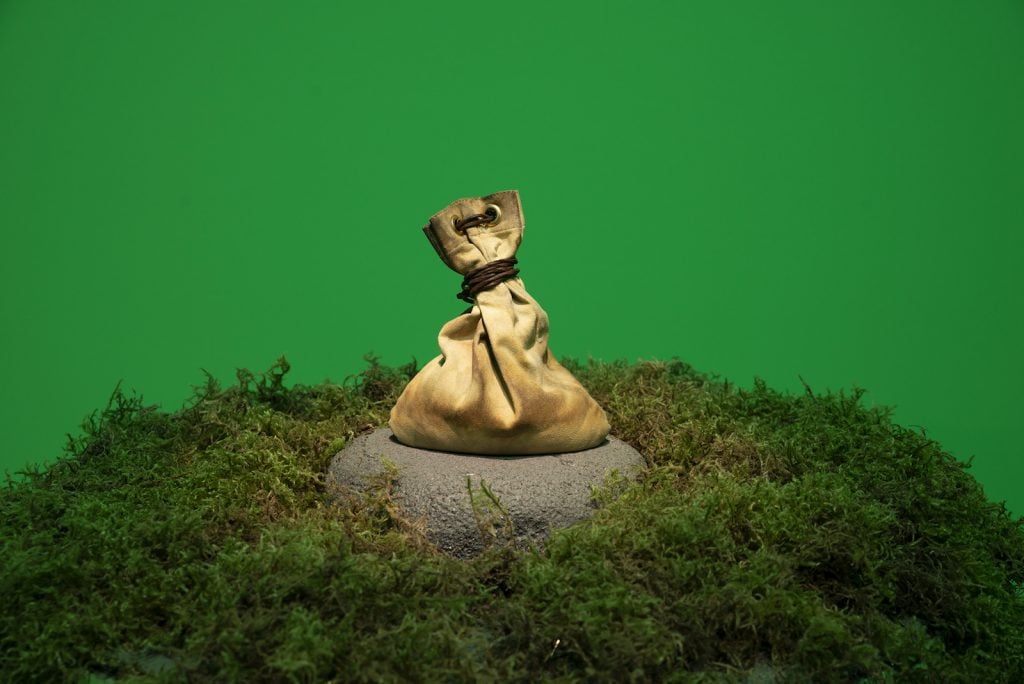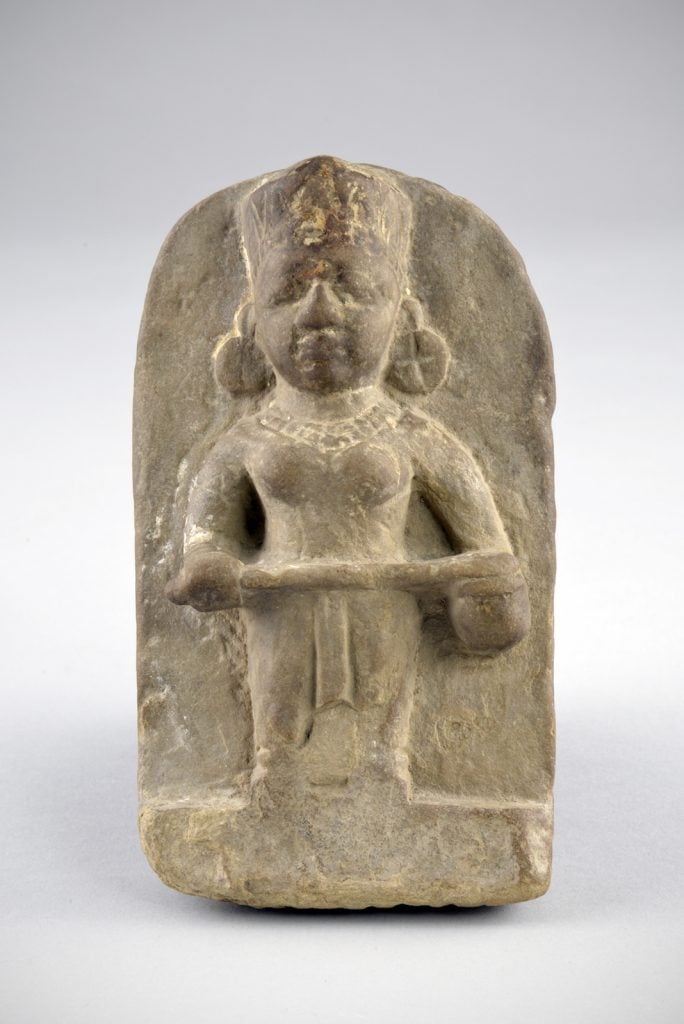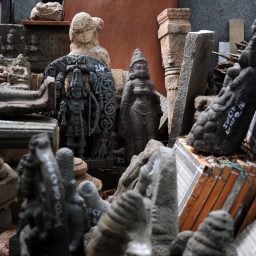A cheeky artist, the Hindu goddess of nourishment, and an antiquarian who may have helped inspire the character Indiana Jones came together recently at a Canadian museum.
This is not the setup for a joke, but for a story that stretches across a century, from India in 1913 to Saskatchewan in 2020—and it all ends with the repatriation of an 18th-century Indian statue of the goddess Annapoorna.
When artist Divya Mehra was invited last year to stage an exhibition at the MacKenzie Art Gallery in the Saskatchawan town of Regina, she began to research the collection, which was built around a bequest from lawyer Norman MacKenzie in 1936. She developed suspicions about a sculpture thought to represent Vishnu, one of the great trinity of Hindu gods.
What set off alarm bells for Mehra was a simple account that MacKenzie had acquired a piece in India. She had to know more, and looking into his papers, she found that the sculpture was stolen from an active temple.
It also piqued her interest that MacKenzie had a relationship with Edgar James Banks, an American antiquarian sometimes credited as having helped inspire the character of Indiana Jones. Banks sold countless antiquities from Baghdad, looted while he was a diplomat there, to American museums.
“So I asked, ‘Can I take a look at this?’ and they allowed me to go into the vault,” she said. “And it’s clearly not a male statue! So I reached out to a few different folks that I know, including a curator at the Peabody Essex Museum, who correctly identified it. I spoke to John Hampton, interim CEO at the MacKenzie, and I requested that the statue be repatriated.”
Based on this discovery, Mehra titled her show at the museum “From India to Canada and Back to India (There Is Nothing I Can Possess Which You Cannot Take Away),” the latter part of the title riffing on a line from Indiana Jones’s nemesis, Belloq. The show, on view through January 2, 2021, deals with “the West’s obsession with simultaneously defining and consuming the histories and identities of other cultures,” according to the museum’s website.
The museum agreed to return the statue. “The repatriation of the Annapoorna is part of a global, long-overdue conversation in which museums seek to address harmful and continuing imperial legacies built into, sometimes, the very foundations of their collections,” Alex King, the curator of the school’s President’s Art Collection, told CTV. “As stewards of cultural heritage, our responsibility to act respectfully and ethically is fundamental, as is the willingness to look critically at our own institutional histories.”
But how would the museum fill the gap created by Annapoorna’s departure? Mehra had an idea.
“Remember the scene were Indiana Jones steals the idol and replaces it with a bag of sand?” she said, referring to the character’s attempt to steal a golden idol off of a booby-trapped pedestal by filling a bag with what he guesses to be an equal weight of sand.

Divya Mehra, There is nothing you can possess which I cannot take away (Not Vishnu: New ways of Darsána) (2020). Photo by Sarah Fuller. Image courtesy the artist and Georgia Scherman Projects.
So Mehra created a sculpture based on the scene, a bag “filled with 2.4 pounds of sand, which is the weight of the statue. As they were talking about the gap in the collection, I proposed that they could acquire this work of mine.
“As we’re having conversations about repatriation, it’s a good time for institutions to acquire new works to replace items that are leaving their collections,” she said. “And, if you have gaps, why not commission BIPOC artists to fill them?”








